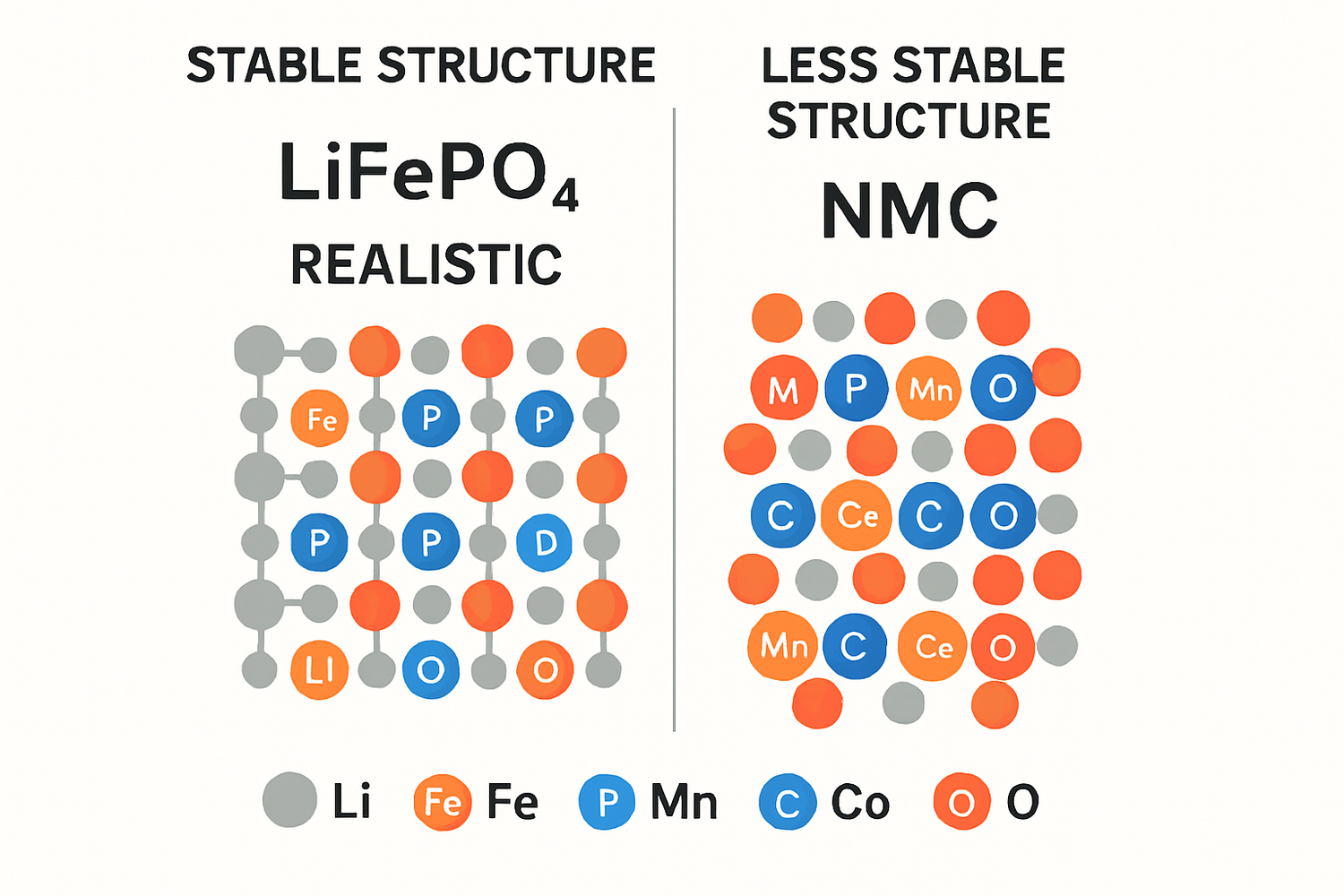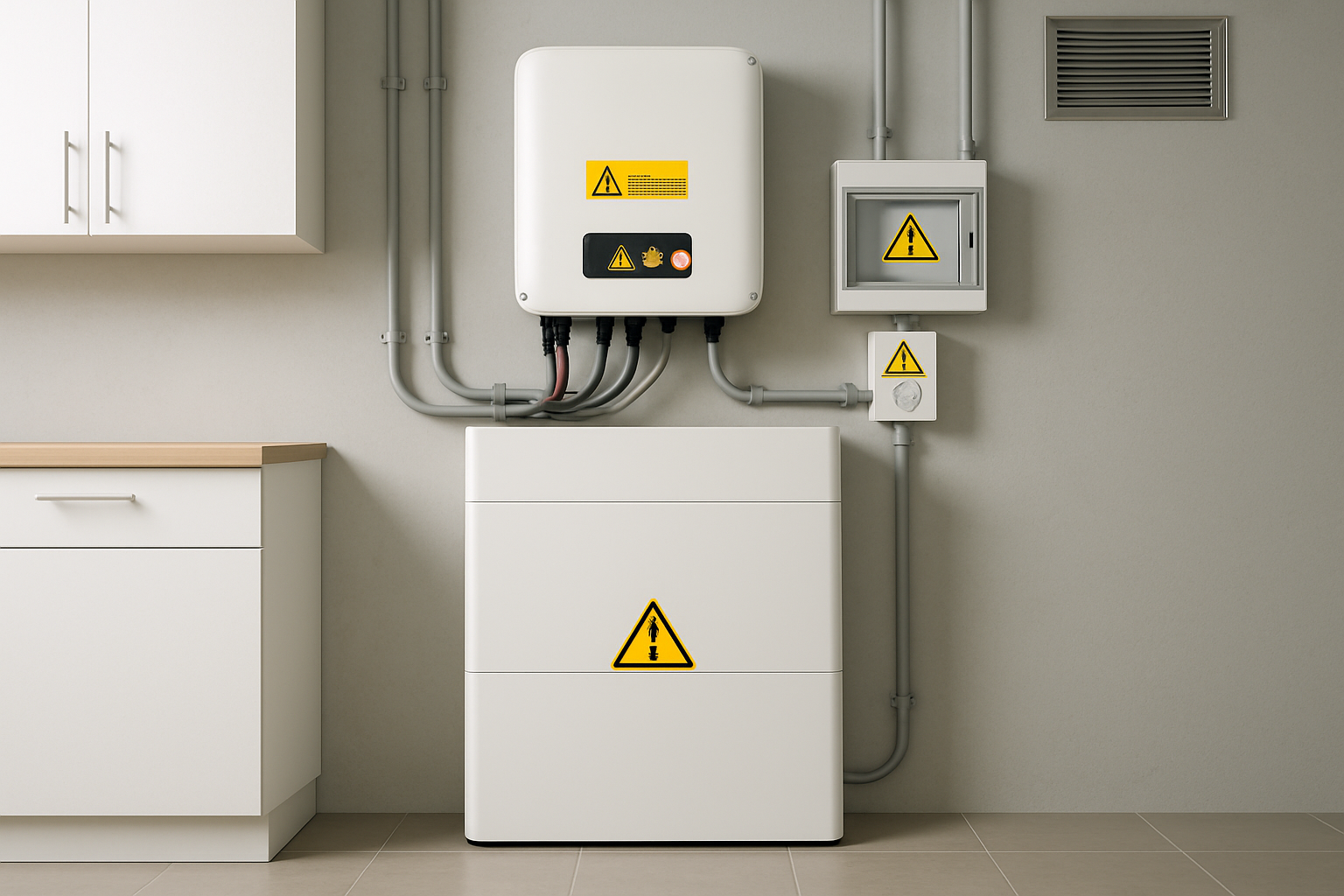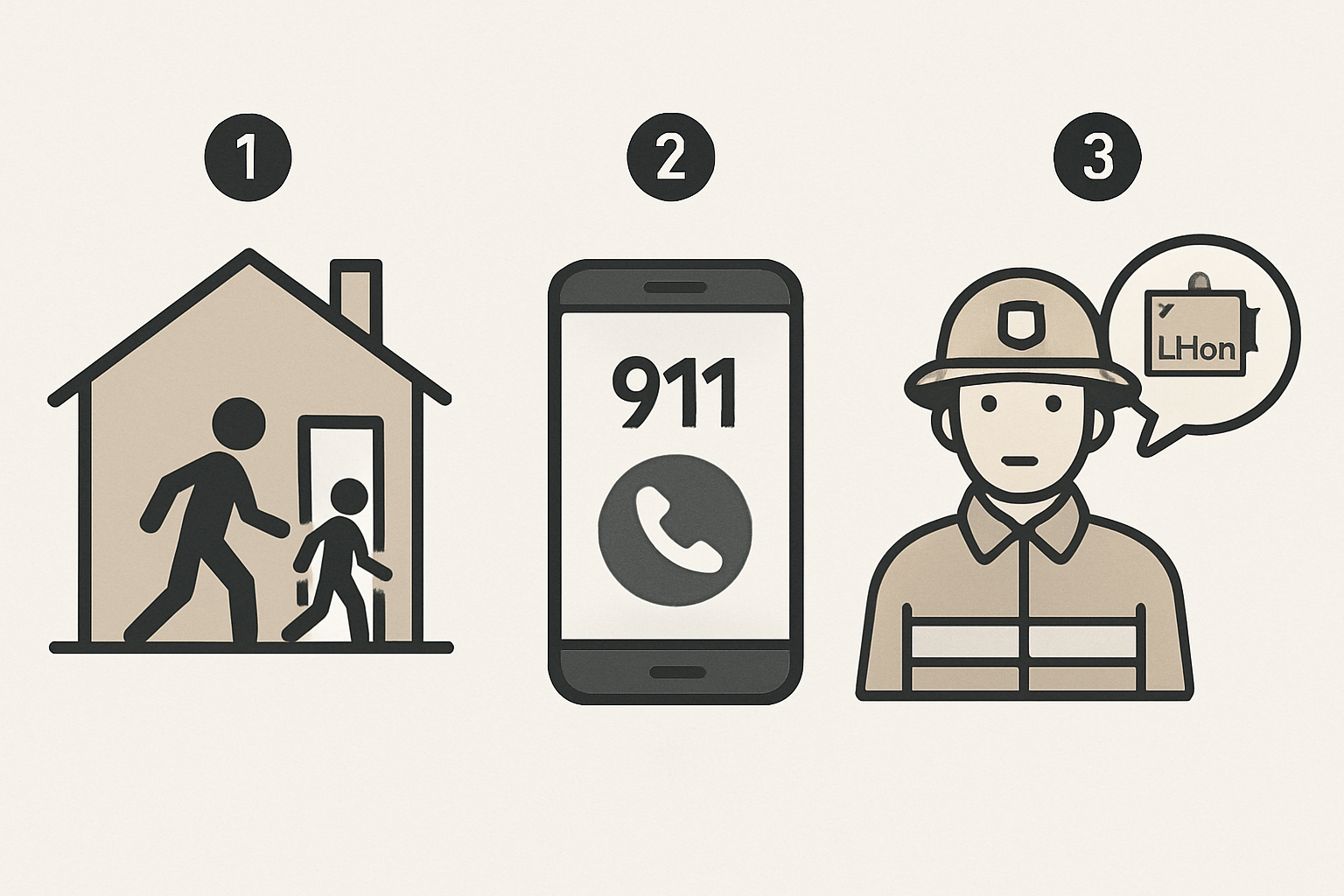Lithium-ion batteries are at the core of modern life, powering everything from smartphones to entire homes. As their use in solar energy storage systems grows, so does the conversation around their safety. News stories about battery fires can be alarming, but they often don't tell the full story. It's time to separate fact from fiction and address the most common myths about lithium-ion battery fires.
Myth 1: All Lithium-Ion Batteries Are the Same
A frequent misconception is that all lithium-ion batteries carry the same level of risk. In reality, the chemistry inside the battery makes a significant difference in its safety profile. Understanding these differences is key to appreciating the safety of modern home energy storage.
Chemistry Matters: LiFePO4 vs. NMC
The two most common types of lithium-ion batteries in energy storage are Lithium Iron Phosphate (LiFePO4) and Nickel Manganese Cobalt (NMC). LiFePO4 batteries are known for their exceptional thermal stability. The strong bond between iron and phosphate atoms makes them much less prone to thermal runaway, a condition where the battery overheats uncontrollably. NMC batteries, while offering higher energy density, have a less stable chemical structure, making them more susceptible to thermal events if not managed properly. For stationary home energy storage, where safety is paramount, LiFePO4 is often the preferred chemistry.
The Importance of Quality and Certification
Beyond chemistry, manufacturing quality plays a vital role. Reputable energy storage systems undergo rigorous testing to meet strict safety standards. One of the most important certifications is UL 9540, which evaluates the entire system, not just the battery cells. This standard ensures that all components work together safely, covering electrical, mechanical, and fire safety aspects. Additionally, UL 9540A is a specific test method used to assess a battery system's response to a thermal runaway event, providing critical data for safe installation.
The Role of the Battery Management System (BMS)
Every high-quality lithium-ion battery pack includes a Battery Management System (BMS). This electronic system is the brain of the battery, constantly monitoring its state. The BMS prevents common causes of failure by protecting against overcharging, over-discharging, and extreme temperatures. It ensures the battery operates within its safe limits, significantly reducing the risk of a hazardous event.
Myth 2: Battery Fires Are Spontaneous and Unpreventable
Stories of batteries suddenly catching fire can create the impression that these events are random and unavoidable. However, these incidents are rarely spontaneous and are almost always triggered by specific, identifiable causes.
Identifying the Root Causes
Lithium-ion battery fires are typically caused by a few key factors: physical damage that compromises the internal structure, manufacturing defects, or electrical abuse like overcharging with an incompatible charger. While defects can occur, they are exceedingly rare in batteries from reputable manufacturers that adhere to strict quality control. The idea of a battery simply igniting without a cause is a myth.
Proactive Safety Through Professional Installation
Proper installation is a critical layer of defense against battery incidents. A professional installer ensures the system is set up according to manufacturer specifications and local codes. This includes providing adequate ventilation to manage heat, using correct wiring to prevent short circuits, and securing the unit to prevent physical damage. These steps are fundamental to the long-term safe operation of any home energy storage system.
Understanding Thermal Runaway
Thermal runaway is the process behind most lithium-ion battery fires. It's a chain reaction where an initial increase in temperature causes a cell to vent flammable gases, leading to more heat and affecting adjacent cells. It is not a spontaneous event but the result of a stressor, such as a short circuit from damage or severe overcharging. Advanced systems with LiFePO4 chemistry and a robust BMS are designed to prevent the conditions that lead to thermal runaway.
Myth 3: You Can't Extinguish a Lithium-Ion Battery Fire
There is a lot of confusion about how to handle a lithium-ion battery fire, with some believing they are impossible to extinguish. While they present unique challenges, they can be managed with the correct approach.
The Right and Wrong Suppression Agents
A common mistake is thinking you need a special Class D fire extinguisher. Class D extinguishers are for combustible metals like pure, metallic lithium, which is not present in consumer-grade lithium-ion batteries. For lithium-ion fires, which are considered Class B (flammable liquid) fires, a standard ABC or dry chemical extinguisher can be used on surrounding materials to prevent the fire from spreading. Firefighters often use large amounts of water to cool the battery pack and stop the thermal runaway chain reaction.
Emergency Response Best Practices
If you suspect a battery is overheating or smoking, the first priority is safety. Evacuate the area immediately and call emergency services. Inform them that a lithium-ion battery is involved so they can respond with the appropriate equipment and strategy. Do not attempt to fight a large or uncontrolled battery fire yourself.
Myth 4: Home Energy Storage Systems Are a Major Fire Hazard
With any new technology in the home, safety is a primary concern. The visibility of battery fires in small consumer electronics has created an outsized fear regarding larger home energy storage systems.
Statistical Reality vs. Media Perception
While incidents do happen, they are statistically rare. A 2024 study from Germany's RWTH Aachen University found the annual fire risk for home energy storage systems to be just 0.0049%. Another analysis calculated the probability of a fire at 0.005%, similar to that of a tumble dryer. Furthermore, as deployments of energy storage have increased dramatically, the percentage of safety events has decreased, thanks to evolving codes and standards. The International Energy Agency (IEA) also highlights that safety standards have improved substantially alongside technological advancements.
Built-In Safety Layers
Modern home energy storage systems are engineered with multiple layers of safety. This starts with the choice of stable chemistry like LiFePO4 and includes a sophisticated BMS, thermal management systems, and durable, fire-resistant enclosures. These systems are designed to contain and mitigate issues at the cell level, preventing propagation. Understanding these built-in protections is crucial, and a deeper look into solar storage performance metrics shows how safety and efficiency are interconnected.
Moving Forward with Confidence
Lithium-ion batteries are a transformative technology for energy independence. While the risk of fire is real, it is often misunderstood. The myths surrounding these events tend to overshadow the reality: that with the right chemistry, certified quality, and professional installation, home energy storage systems are a reliable and safe solution. By choosing systems built on stable LiFePO4 technology and adhering to stringent safety standards like UL 9540, you can confidently embrace the benefits of solar energy storage.
Frequently Asked Questions
What is the most common cause of lithium-ion battery fires?
The most frequent causes of lithium-ion battery fires are physical damage, such as being punctured or crushed, and electrical issues like overcharging or using a non-certified charger. Manufacturing defects are a much rarer cause.
Are LiFePO4 batteries safer than other lithium-ion batteries?
Yes, LiFePO4 batteries are widely considered safer due to their superior chemical and thermal stability. The strong molecular bonds in LiFePO4 make it significantly more resistant to overheating and thermal runaway compared to other chemistries like NMC.
What should I do if I suspect my battery is overheating?
If you notice a battery is swelling, making unusual noises, or feels excessively hot, do not use or charge it. If it is safe to do so, move it away from flammable materials. If you see smoke or flames, evacuate the area immediately and call your local emergency services.





Leave a comment
All comments are moderated before being published.
This site is protected by hCaptcha and the hCaptcha Privacy Policy and Terms of Service apply.